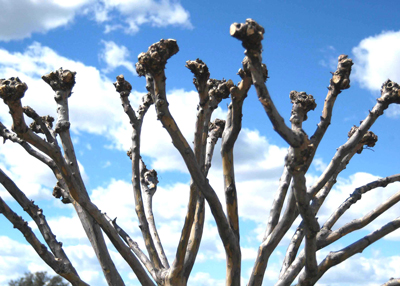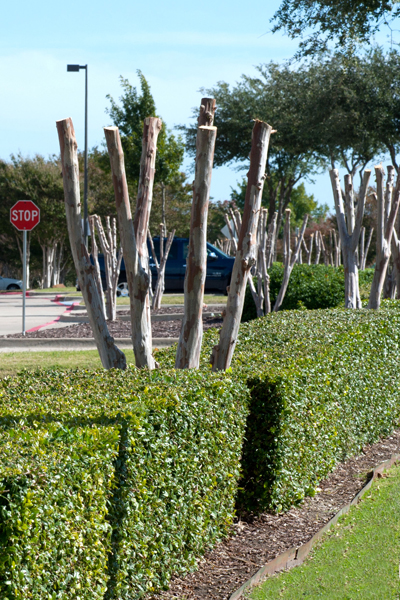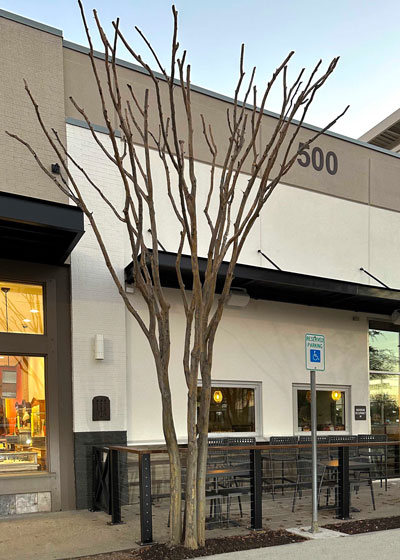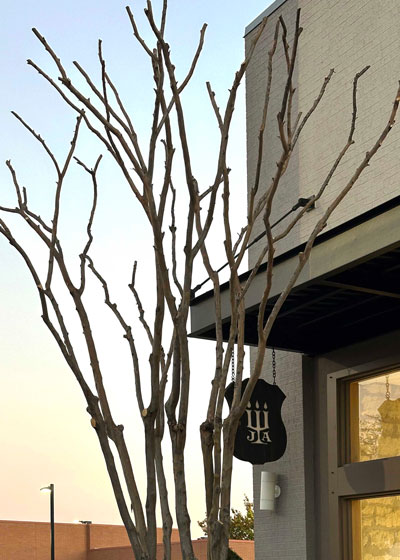I’ve seen a miracle!
When I began my career of trying to help Texas gardeners 54 years ago one of my goals was to stop the barbaric topping of mimosas and crape myrtles.
Mimosas have pretty well disappeared. Nurseries no longer sell them because they have too many problems. So you don’t see them getting whacked like you used to.
But crape myrtles have never been more popular. We now have more than 125 named varieties in the nursery industry – some more widely available than others. Mature heights range from 2 to 32 ft. depending on the variety.
But I’m still out there slaying dragons, trying to get people to quit topping crape myrtles.

Topping does nothing to help crape myrtles…
• It ruins their natural growth forms and turns them into bizarre, tortured creatures.
• It does not make them shorter. They grow right back. It’s in their DNA to grow to a specific height.
• It does not make them bloom better. It delays the first round of blooms by 6-8 weeks, and it causes giant flower heads that the plant can’t support.

There is no excuse for topping crape myrtles. Ever.
I can only think of two reasons that people continue to do it:
• They see other people whacking. “Monkey see, monkey do.”
• Landscape companies have no other work for their employees to do in the slow times of mid-winter, so they sell customers on its “importance.” (Time to look for another landscape company.)
I tried a compromise…
In an effort to meet people halfway, I suggested that nothing bigger than a pencil in diameter be trimmed off crape myrtles.
I figured that would wear people out and that the boredom would cause them to quit.
Indeed, just the opposite happened. People would start following that guideline, but then they’d discover that if they cut just a little bit lower they could remove a lot more of the twigs with just one cut, and so we were right back where we started.
So I changed what I said and I wrote…
I gave up that approach and suggested that people do no pruning at all to the tops of their crape myrtles (other than to remove dead or damaged limbs). I said, “If a plant is too tall, either move or remove it.”
For the most part, that remains my recommendation.

But a few days ago my life rewound in front of my eyes…
Lynn and I had been shopping. My legs were giving out and I headed out to the car. As I sat there tuning the radio, I noticed that the crew that had pruned the crape myrtles in front of James Avery and the new First Watch on Stacy Road in Allen had barely touched the tops of the tall crape myrtles with their trimmers. It’s a miracle! Beautiful work!

Please, everyone else, take note…
If must prune your crape myrtles, this is the way to do so.
Or, you can still opt not prune them at all. That will be just fine.
(Next week I’ll show you how to retrain a crape myrtle that’s been whack-hacked and topped.)
